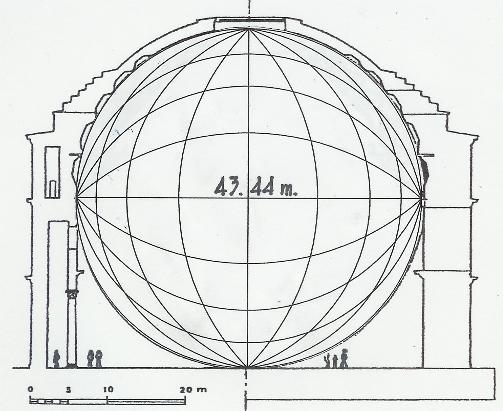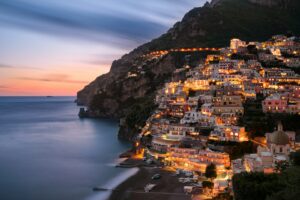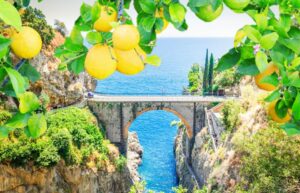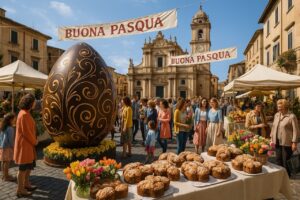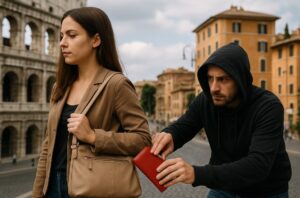Rome: the capital
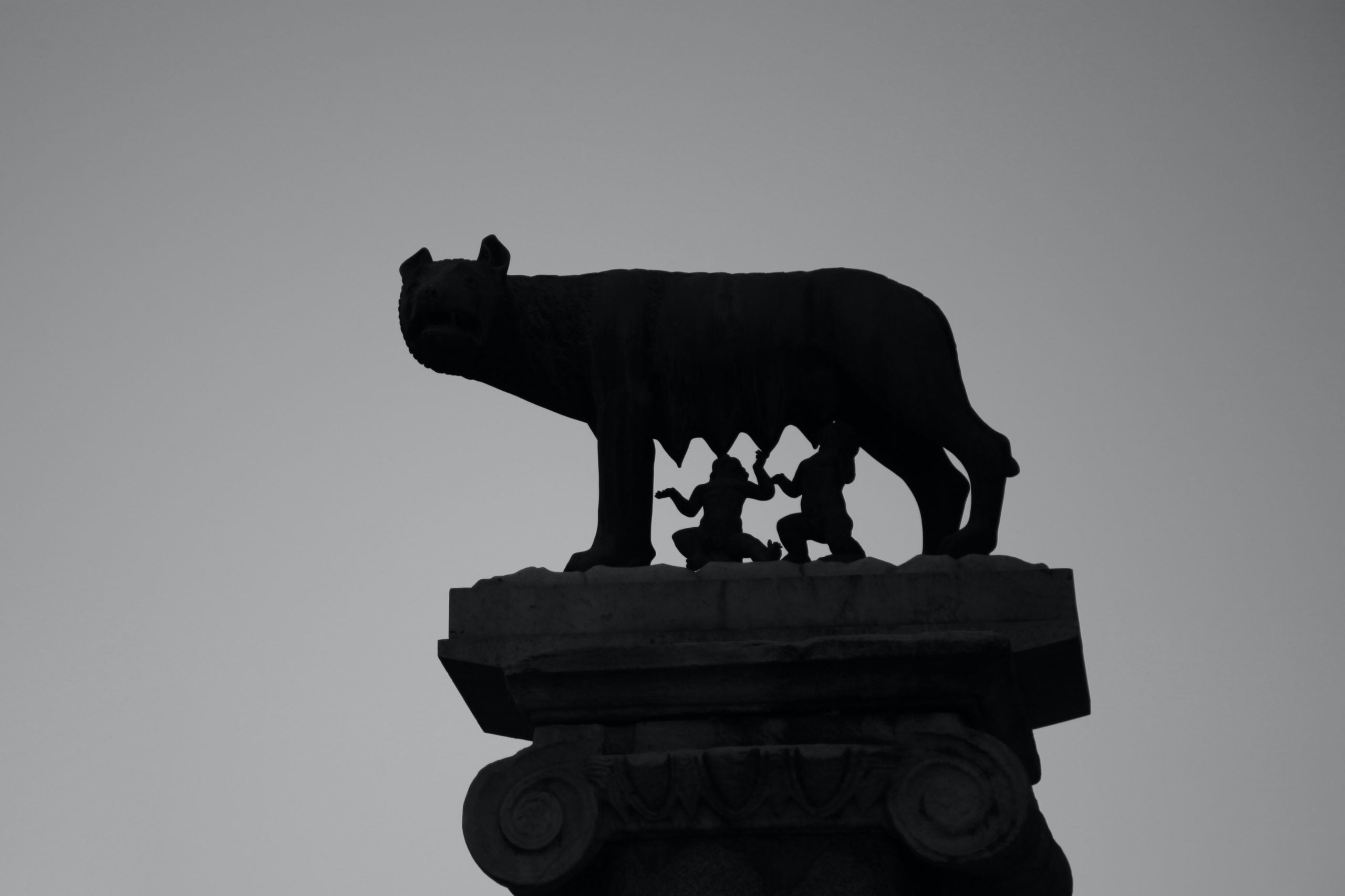
Roma, the eternal city, was born upon the legendary seven hills of Italia: Il Palatino, Il Quirinale, L’Esquilino, Il Viminale, Il Celio, L’Aventino, e Il Campidoglio, all gracefully nestled along the banks of the majestic Tevere (Tiber) River. History unfolded in the vicinity of Il Campidoglio and Il Palatino, making this area the epicenter of the Roman Empire. Here, amid the ruins and excavations of the Foro Romano (Roman Forum), you can reach out and touch the echoes of a bygone era.
And the Colosseo (Colosseum), that colossal Roman amphitheater, offers a glimpse into the thrilling spectacles of gladiator combat in ancient times. Roma’s past is as vibrant as her present, inviting you to explore her multifaceted soul.
What should you do in Rome?
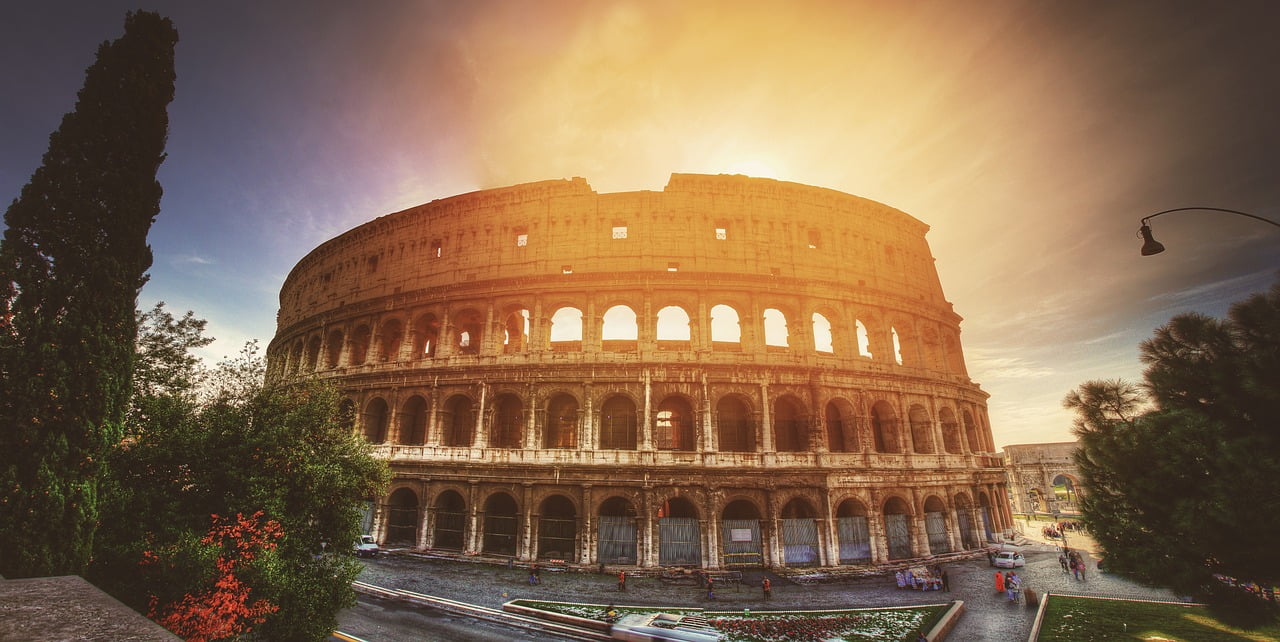
The Colosseum : Il colosseo
The Colosseum of Rome became the greatest amphitheater in Roman history, located immediately east of the Roman Forum, is a huge amphitheater built by Emperor Vespasian in A.D. 70-72 and held up to 65,000 spectators. Emperor Titus opened the Colosseum, also known as the Amphitheater Flavius, with games and festivities that lasted 100 days. a lot of blood was spilled during the famed gladiatorial combats and animal fights.
The Colosseum was used to stage more than just gladiatorial contests; it also hosted hunts, dramas, and religious ceremonies. Animal hunts were particularly popular, with exotic animals from all over the empire brought in for the entertainment of the crowds. The shows that took place in the Colosseum provided a unique form of entertainment that was unmatched anywhere else in the world.
Today, the Colosseum is an iconic symbol of Rome and one of the city’s most popular tourist destinations. It’s easy to see why it’s so popular; with its imposing size and beautiful architecture, it’s a marvel to behold. A visit to the Colosseum provides a fascinating glimpse into ancient Roman life.
The Colosseum is now considered one of the world’s seven wonders.
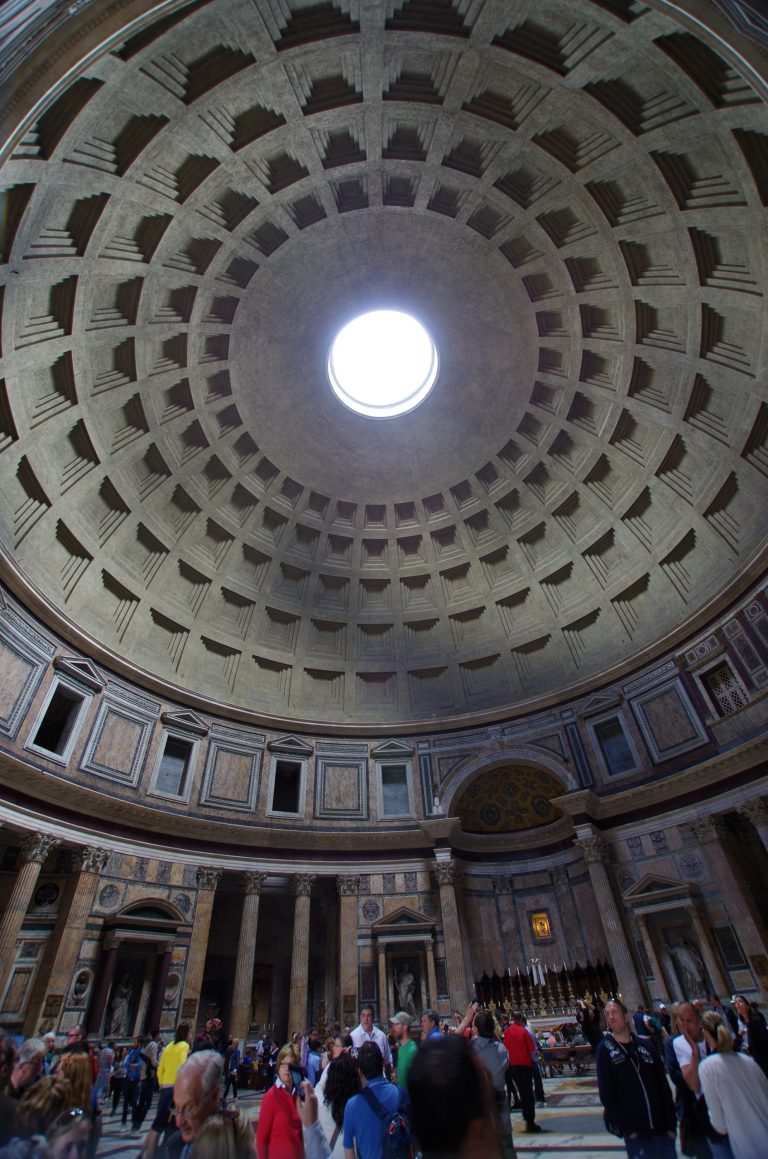
The Pantheon
Over the centuries, the Romans have repurposed their architectural treasures, transforming into a church.
Imagine standing in this awe-inspiring space, feeling the weight of history and the whispers of the past. You’re not just in a building; you’re inside a living narrative, a monument that has evolved with Rome itself, continually reborn through each chapter of the city’s rich history.
Your eyes are immediately drawn upwards to the awe-inspiring dome, a marvel of ancient engineering. It stretches 142 feet (43.44m. ) across—exactly the same as its height from the floor, creating a perfect sphere of space.
The dome’s grandeur isn’t just in its size; it’s in how it interacts with light. The oculus, the eye of the dome, serves as the room’s sole light source. As the sun moves across the sky, the light dances around the room, illuminating the walls, the niches, and the faces of visitors like you, casting a heavenly glow that makes the whole structure feel alive.
Not Rome, but still in Rome: Vatican City
The Vatican City is the world’s tiniest country, whose head of state is the Pope. This little state is only 44 hectares (comprising only 0.2 square miles.) and is dominated by St. Peter’s Basilica and St. Peter’s Square, which is famous for the Pope’s sermons. The Sistine Chapel, which is part of the Vatican Museums, will be the highlight of many visitors’ trips to Vatican City. Michelangelo’s stunning frescoes adorn the area where cardinals attend conclaves that elect a new pope.
It is a city that feels like an extended art museum—one part Renaissance palace, one part gothic cathedral and two parts modernist basilica.
Situated just 0.44km2 in size with a population of around 800 people, Vatican City is also the most densely populated country in the world – just ahead of Monaco. Its only official language for almost 1,000 years has been Latin. There are more than 600 rooms inside the complex where popes have lived since 1377.
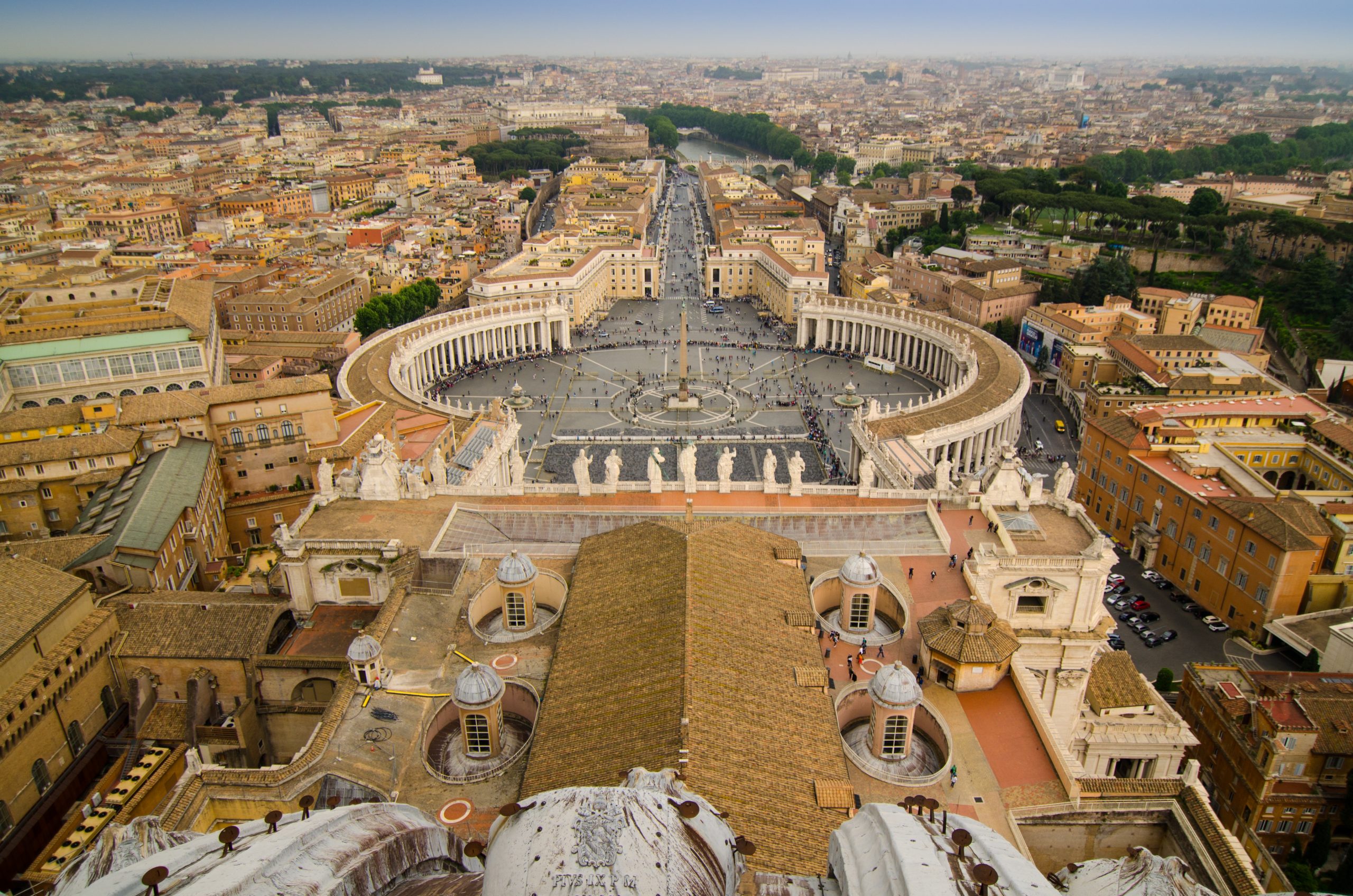
The Sistine Chapel
The Vatican Museums are a must-see for visitors to Rome and the Catholic world.
At least three million visitors come to the Vatican Museums each year They comprise one of the largest art collections in the world with over 70,000 items on display, including some of the most famous paintings and sculptures by Michelangelo, Leonardo da Vinci, Raffaello Sanzio, Caravaggio, and others.
The Sistine Chapel (‘la Cappella Sistina’) is the most famous of the Vatican museums. The chapel was named after Pope Sixtus IV, that hired Michelangelo Buonarroti to paint the spectacular ceiling. It illustrates the creation. The side walls are similarly lovely, with paintings by Perugino, Ghirlandaio, Botticelli, and others depicting the life of Jesus. Michelangelo’s picture of the ‘Last Judgement’ hangs on the wall behind the altar. The Sistine Chapel is most recognized as the location where cardinals convene for a conclave to elect a new Pope.
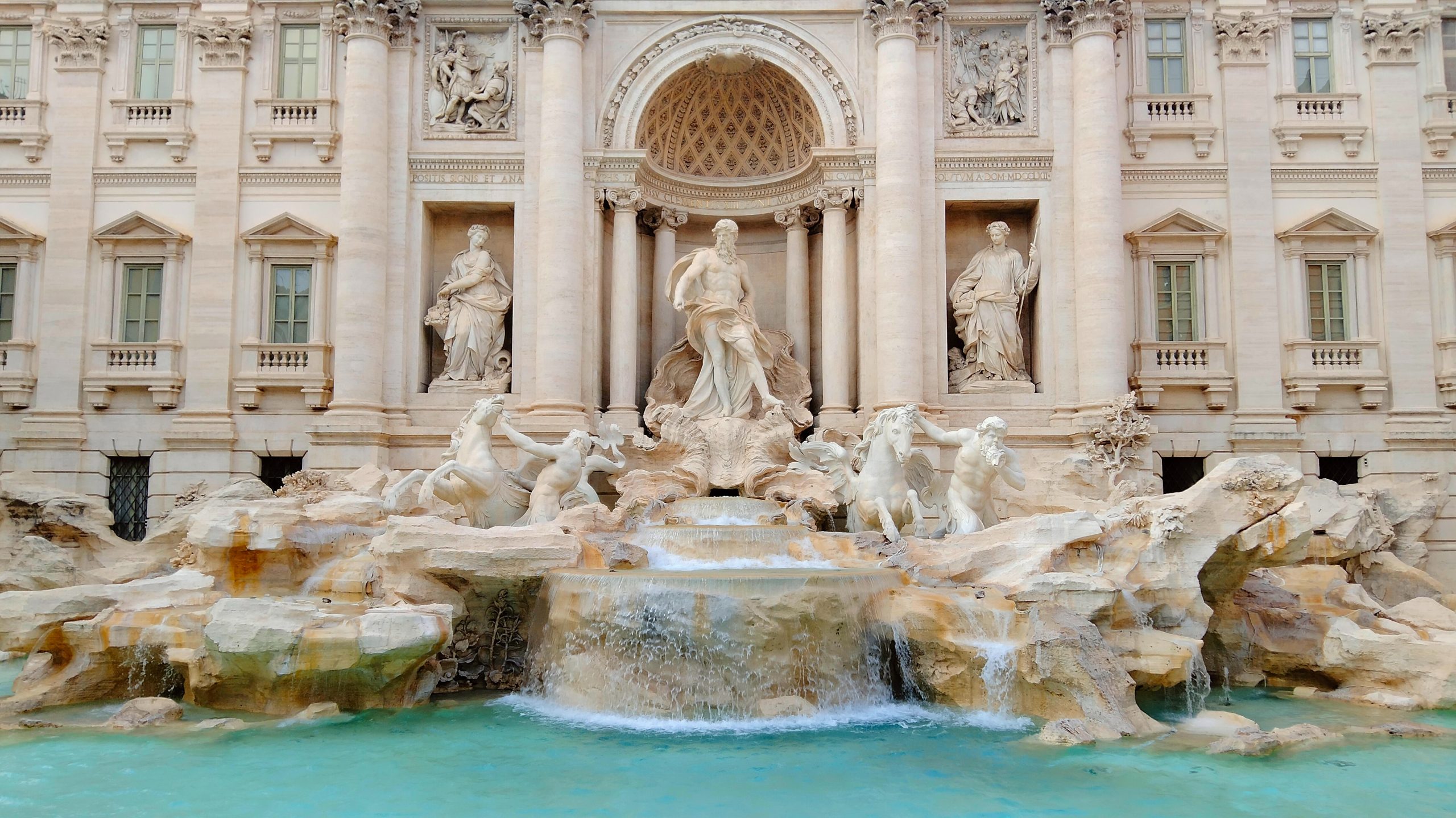
Trevi Fountain
We’re going to finish our tour of the “Eternal City” by seeing the famous Trevi Fountain a symbol of Rome and one of the most famous fountains in the known world. The Trevi Fountain is a popular tourist attraction in Rome and has been featured on film more than once.
Remember in “Roman Holiday” (1953) with Audrey Hepburn, Princess Ann of Greece falls in love at first sight when she comes to visit this magnificent piece of Italian architecture that stands as one of the city’s most famous landmarks. The fountain also played an integral part for director Federico Fellini during the production stages of his acclaimed masterpiece La Dolce Vita which starred Marcello Mastroianni.
Before leaving, don’t forget to throw a coin in the fountain and make a wish
Ah, Rome—the city where every cobblestone seems to whisper history. While it’s true that one day barely scratches the surface, you can still catch a glimpse of its magic. You might add a stop or two such as the Spanish Steps, taking in the lively atmosphere of Piazza Navona, or strolling past the imposing Castel Sant’Angelo. And let’s not forget the culinary adventure that awaits in Trastevere, a neighborhood that’s perfect for a dinner steeped in Roman ambiance.
But let’s be real, Rome wasn’t built in a day, and it certainly can’t be fully appreciated in one either. So, my tip for you? Don’t shortchange yourself—give Rome at least three days. Trust me, the city has a way of revealing itself a little more with each passing day, and you’ll want to be there to catch every moment.

